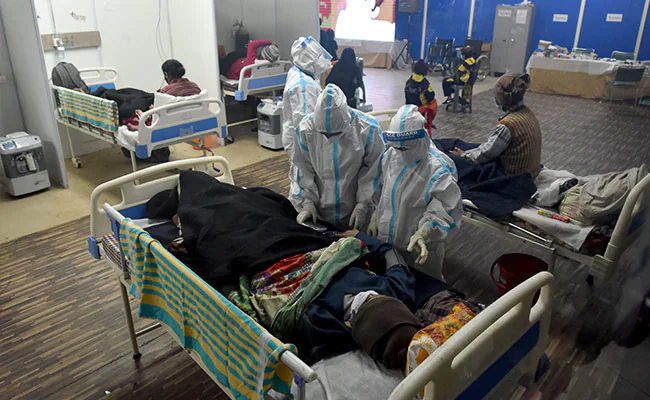New Delhi– A comparative study of all admitted COVID-19 patients in Max Healthcare hospitals suggests that during the ongoing third wave, occupancy of ICU beds and oxygen requirement is not higher compared to the prior two waves of the coronavirus infection.
This comparative study from all admitted patients across Max Healthcare hospitals has been conducted to compare the rate of admission, ICU requirement, mortality among COVID-19 patients from the first wave and second wave vs the third wave.
The key finding notes that the percentage occupancy of ICU beds, however, is not higher compared to the first two waves.
“During second wave last year when Delhi was recording 28,000 COVID-19 positive cases per day, hospitals across the city were full and no ICU beds were available. In comparison to that, in the current wave when the national capital recorded its highest around 28,000 positive cases in a single day, the hospital COVID occupancy across our network is less. There is no crisis inside our hospitals,” as per the statement.
According to the study, oxygen requirement was at a nominal rate of 23.4 per cent during the current wave as compared to the first wave and second wave where it was 63 per cent and 74 per cent respectively.
The study has been conducted under Group Medical Director, Max Healthcare, Dr Sandeep Buddhiraja.
Researchers note that the Omicron variant seems to be causing a much milder disease. Lesser numbers of patients require hospitalisation and the strain on healthcare services in terms of oxygen requirement is also much lesser, according to the study.
“The overall mortality in the first wave was at 7.2 per cent which increased to 10.5 per cent during the second wave. We have recorded 6 per cent mortality in COVID patients during the ongoing wave. Hence, although the number of patients getting admitted is fast rising over the past 10 days and more and more daily deaths are being reported, the good news is that variant Omicron seems to be causing a much milder disease,” the statement further read.
“Lesser numbers of patients require hospitalisation and the strain on healthcare services in terms of oxygen requirement, etc is also much lesser,” it added.
The study also claims that low mortality has been reported and a large part of this is because of COVID-19 vaccinations. As per the data, out of 82 deaths so far, 60 per cent was seen in the partially or unvaccinated population.
“Also, the deaths reported are largely in the elderly population (above 70 years of age) suffering multiple co-morbidities such as kidney diseases, heart diseases, diabetes, cancers,” the study mentions.
Lastly, amongst the paediatric admissions, the hospital network has admitted 41 children (below 18 years), however, no deaths have been reported in this age group. Among these, a total of seven required PICU while two were on ventilators.
Follow this link to join our WhatsApp group: Join Now
Be Part of Quality Journalism |
Quality journalism takes a lot of time, money and hard work to produce and despite all the hardships we still do it. Our reporters and editors are working overtime in Kashmir and beyond to cover what you care about, break big stories, and expose injustices that can change lives. Today more people are reading Kashmir Observer than ever, but only a handful are paying while advertising revenues are falling fast. |
| ACT NOW |
| MONTHLY | Rs 100 | |
| YEARLY | Rs 1000 | |
| LIFETIME | Rs 10000 | |











